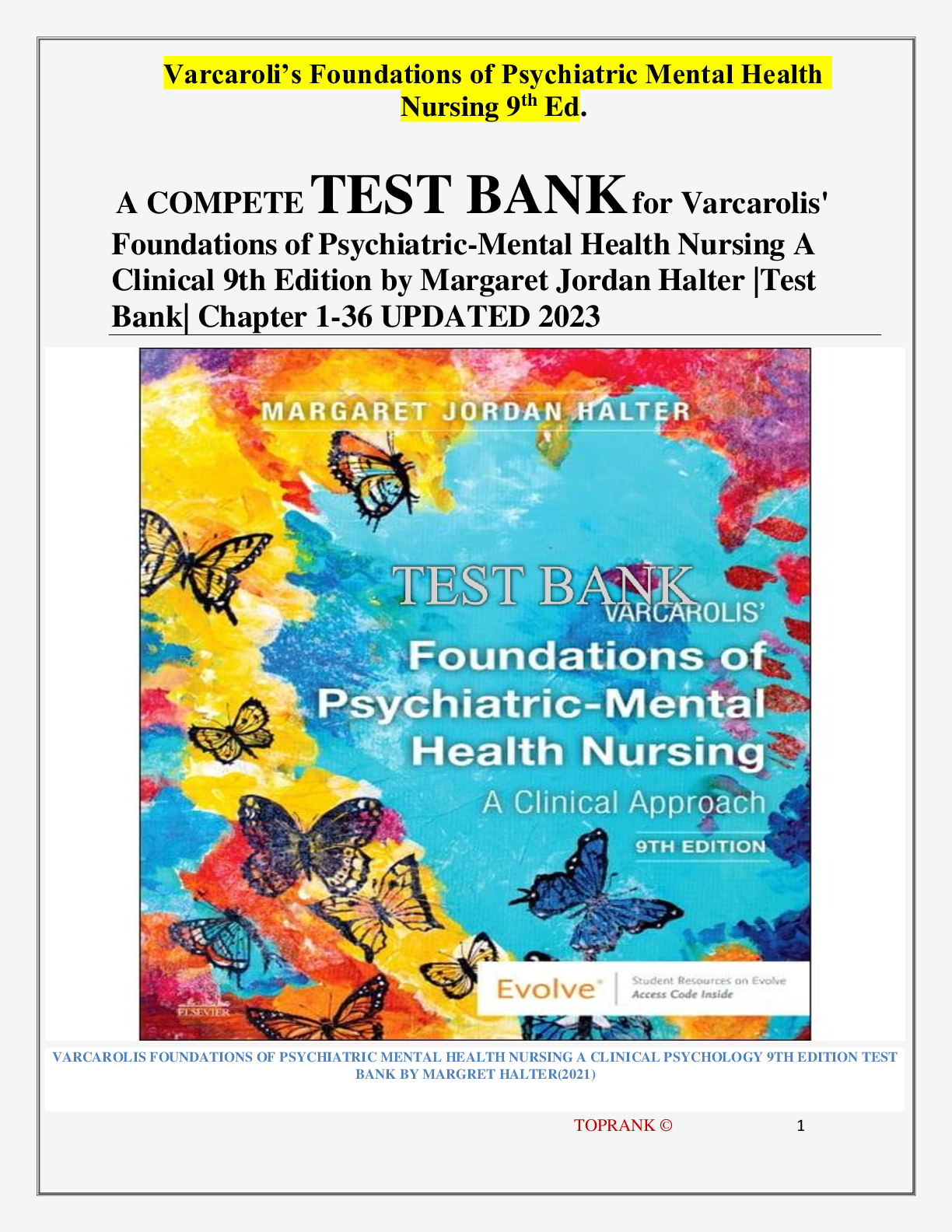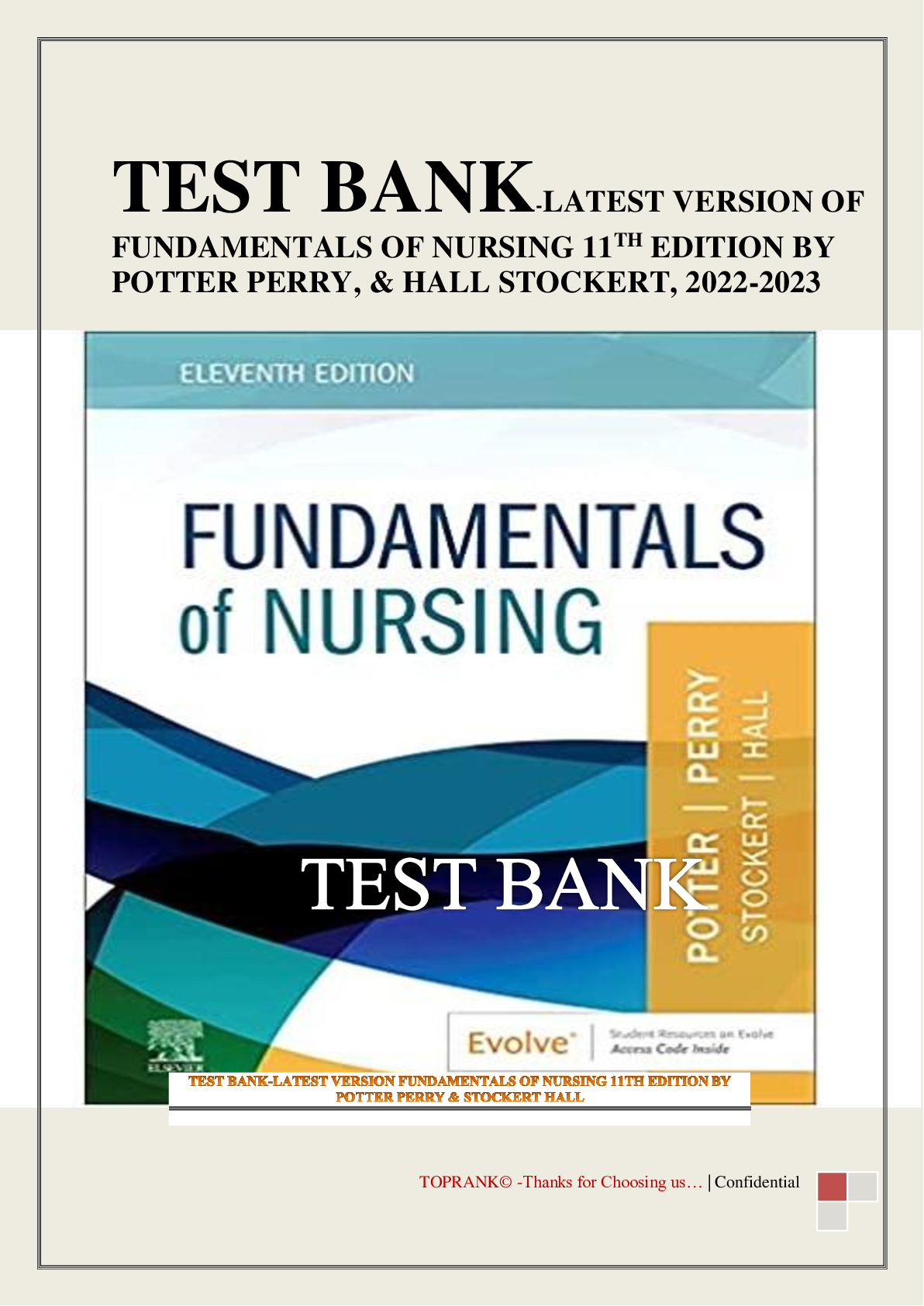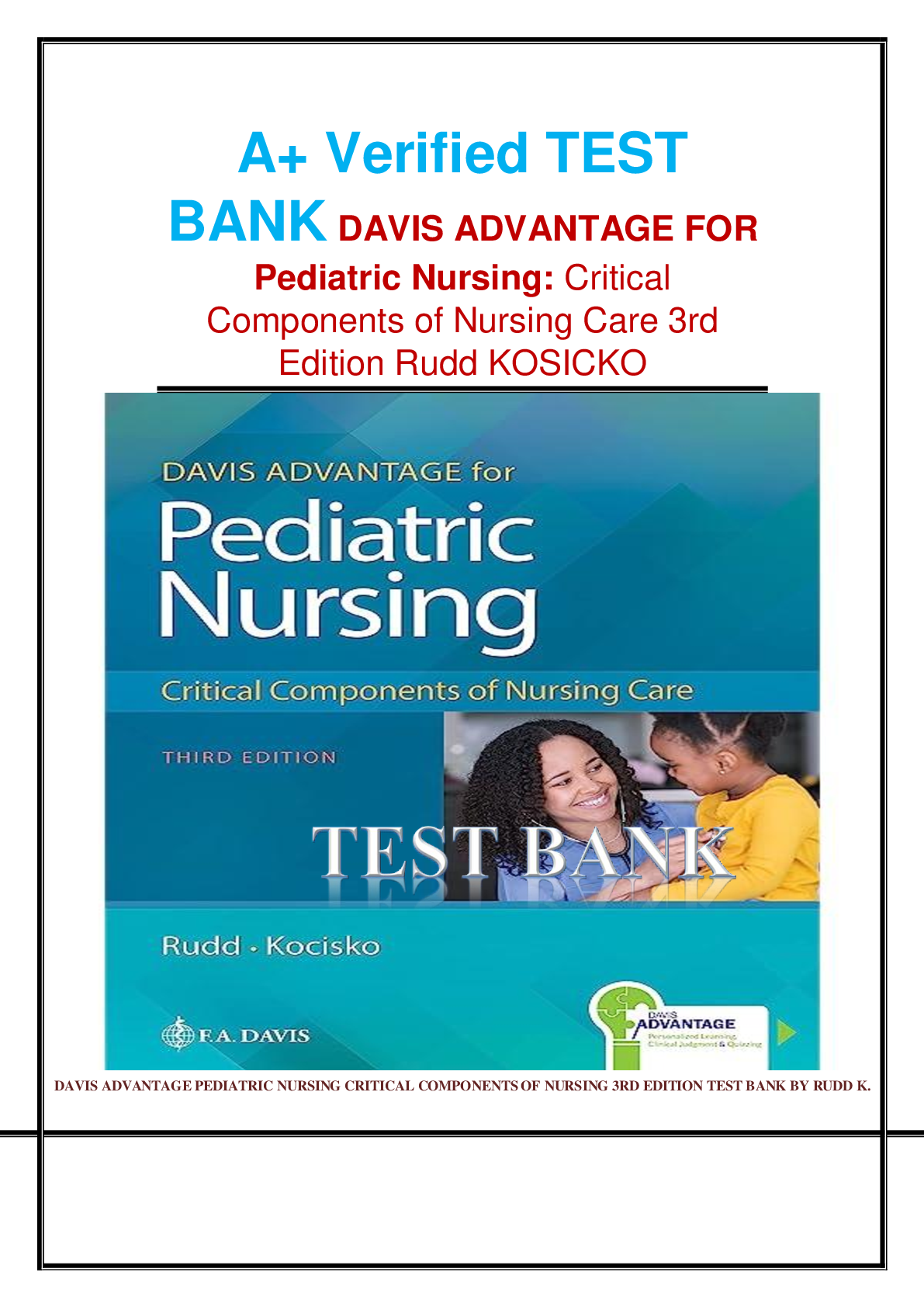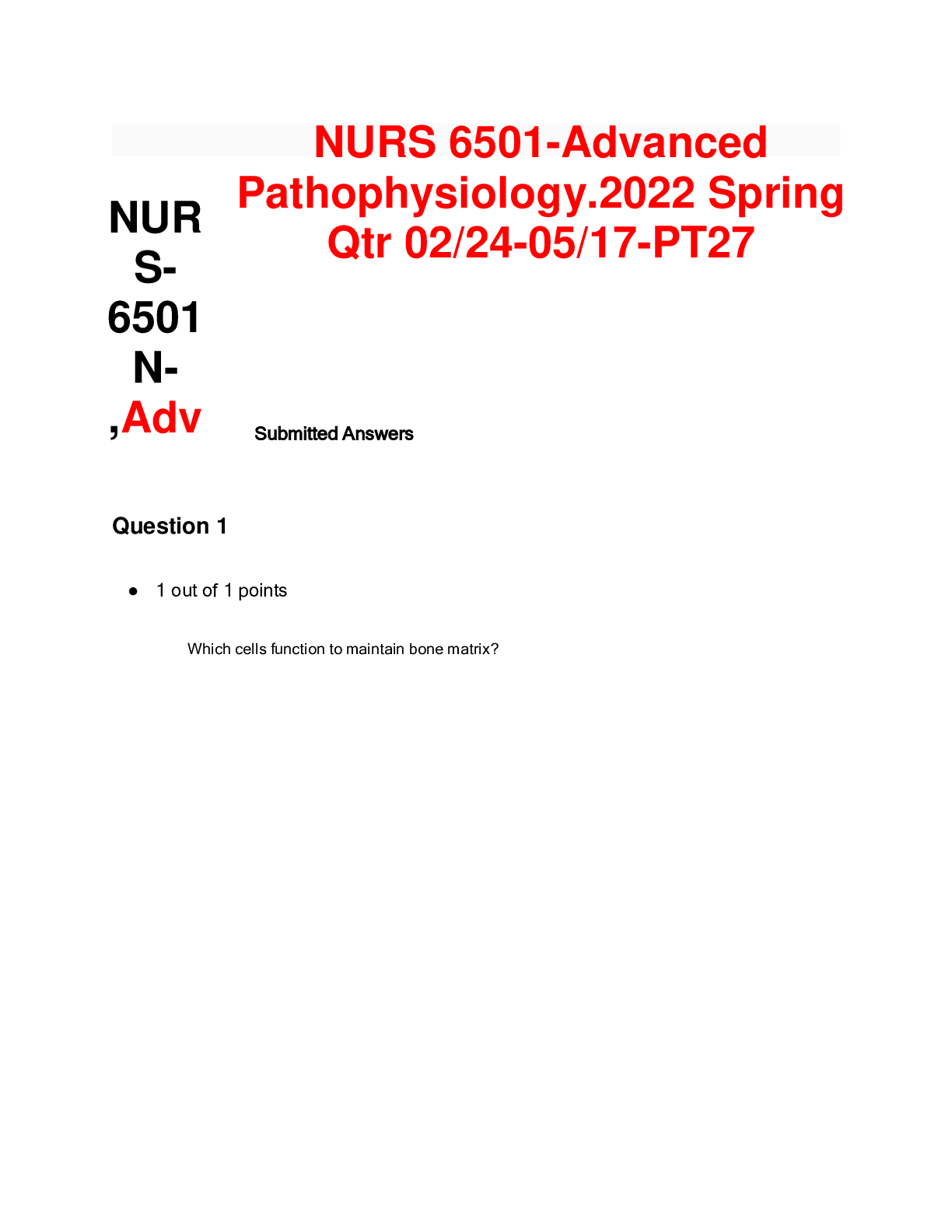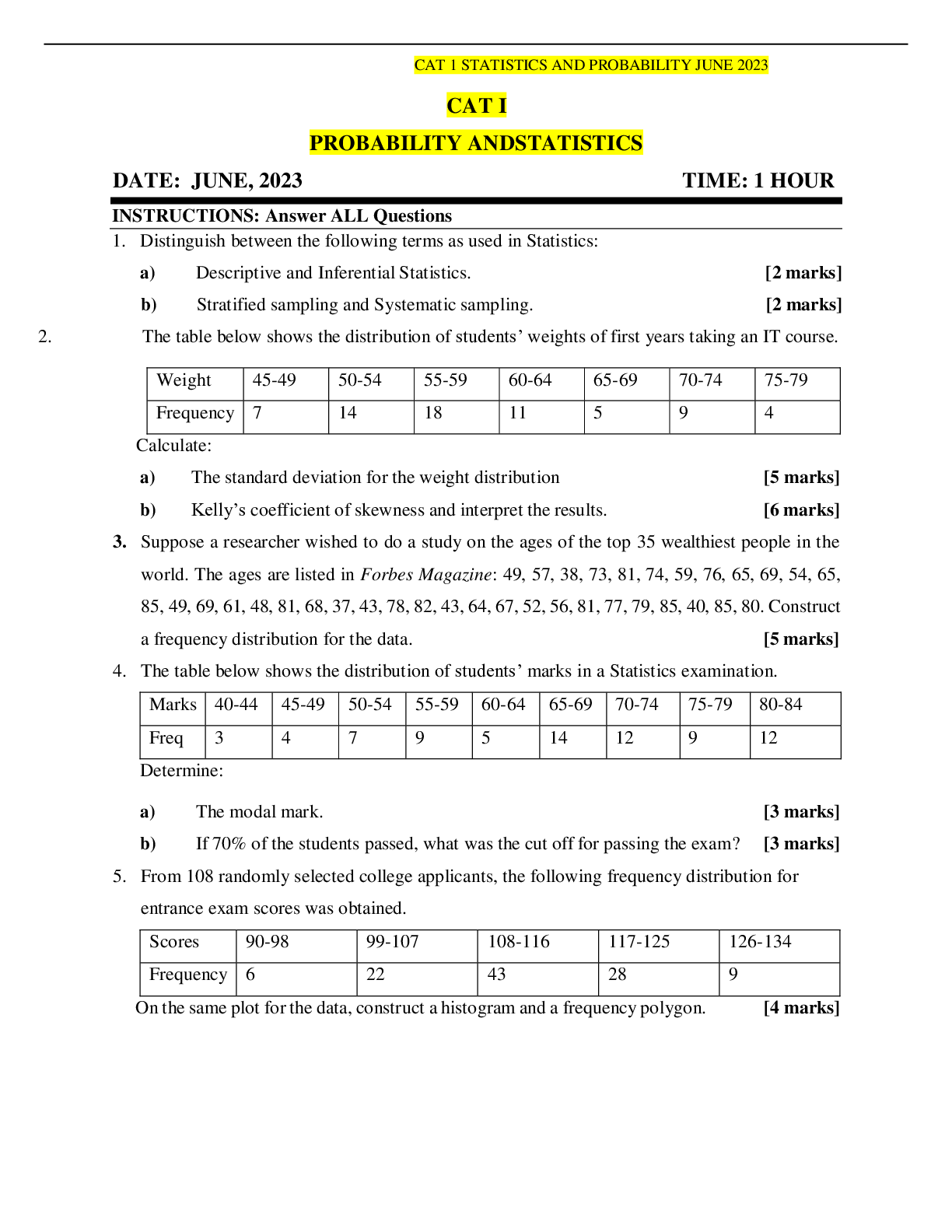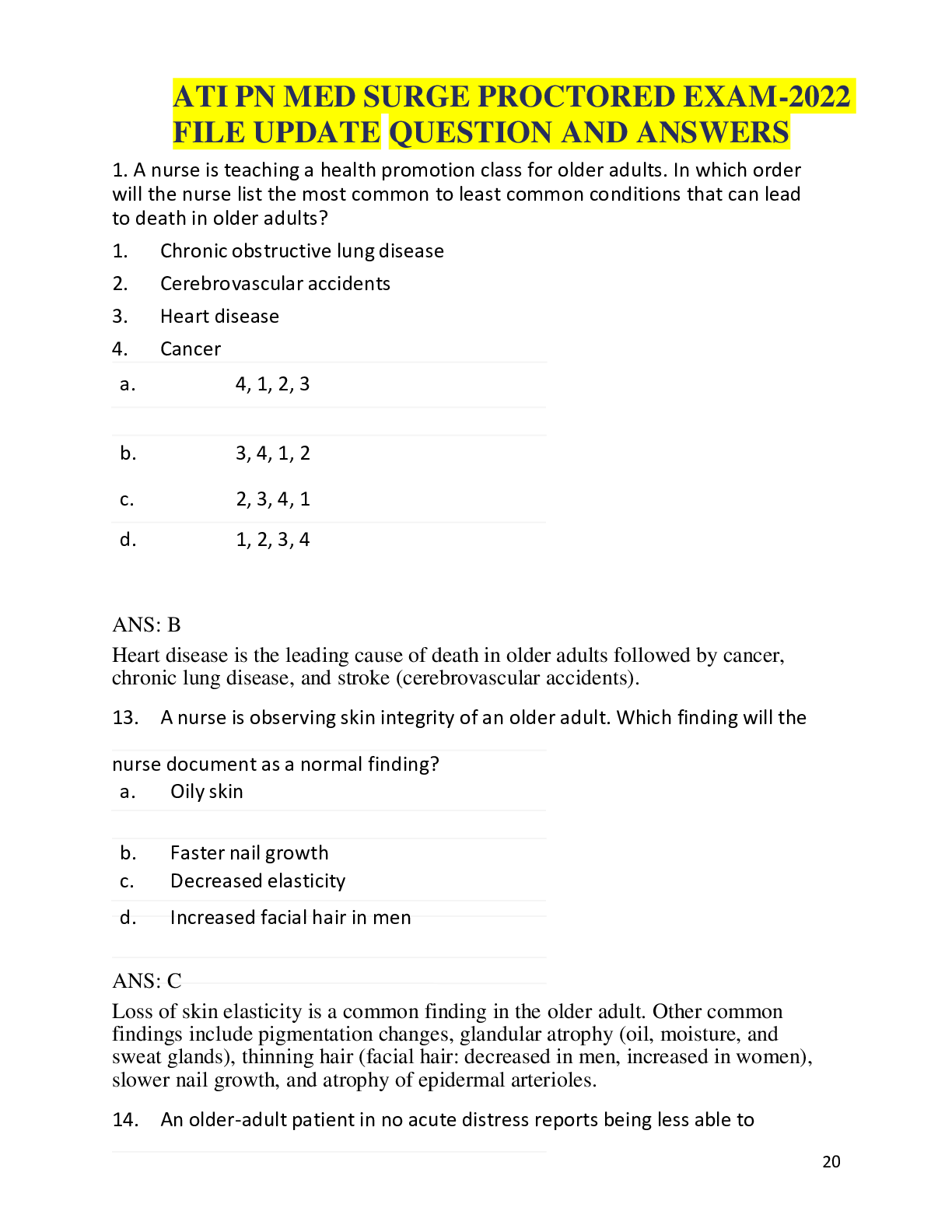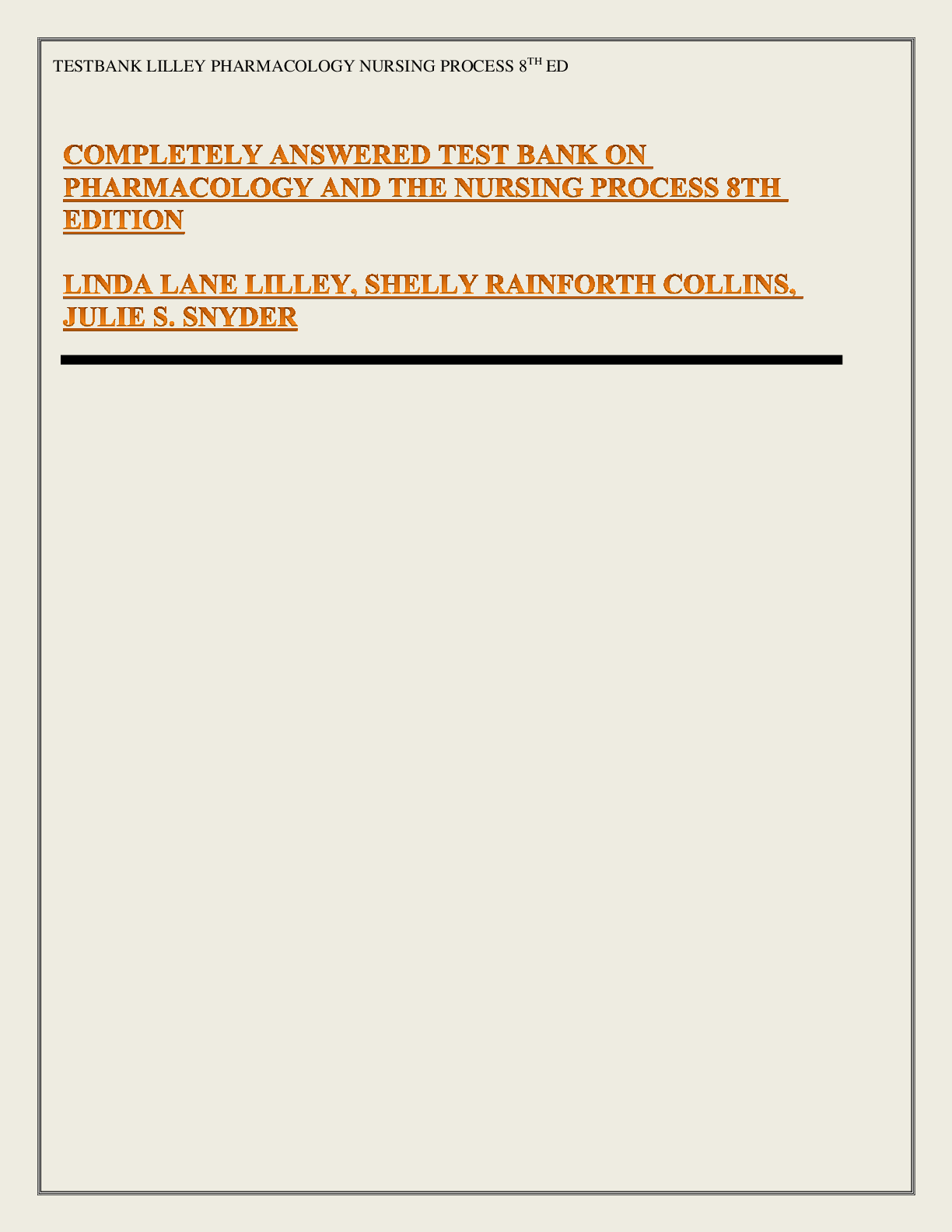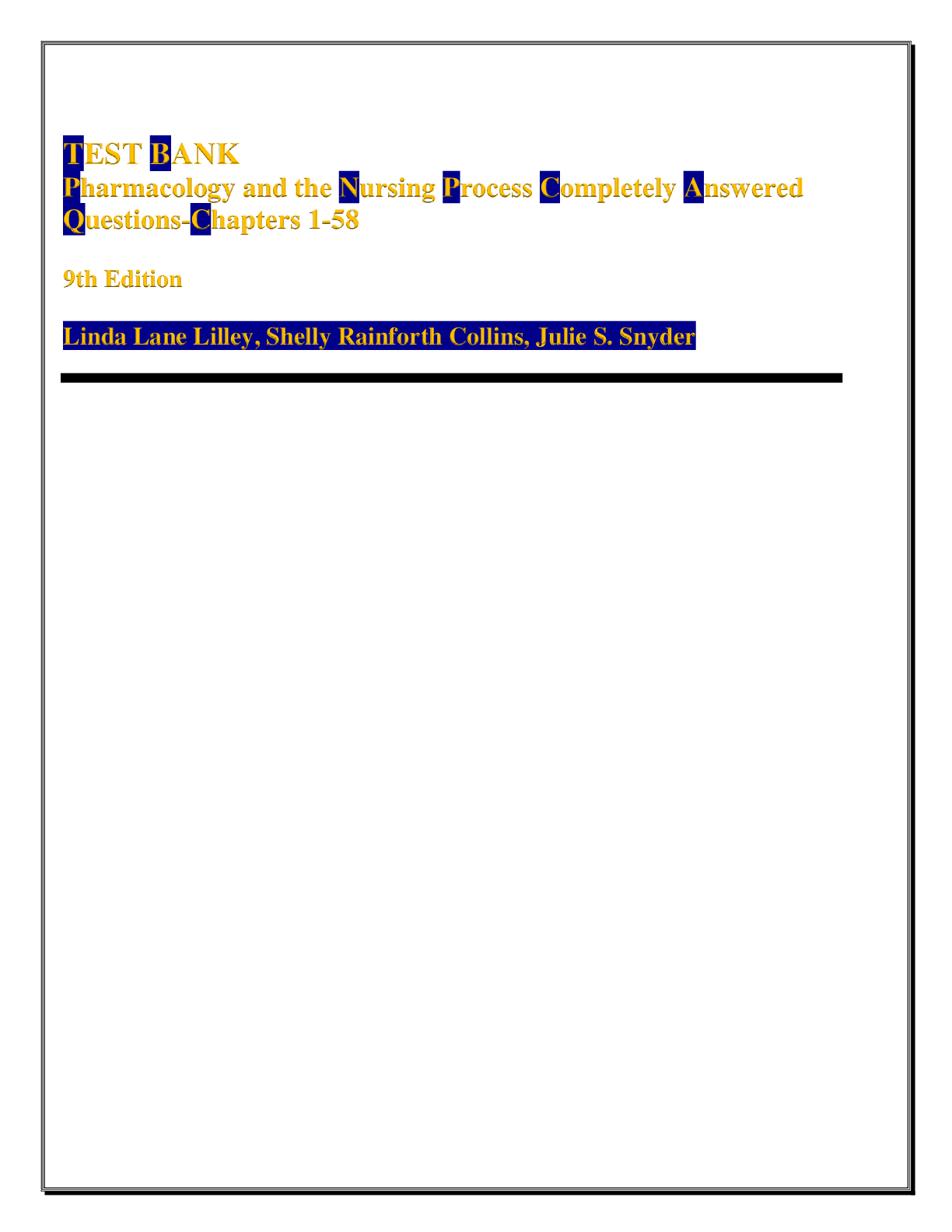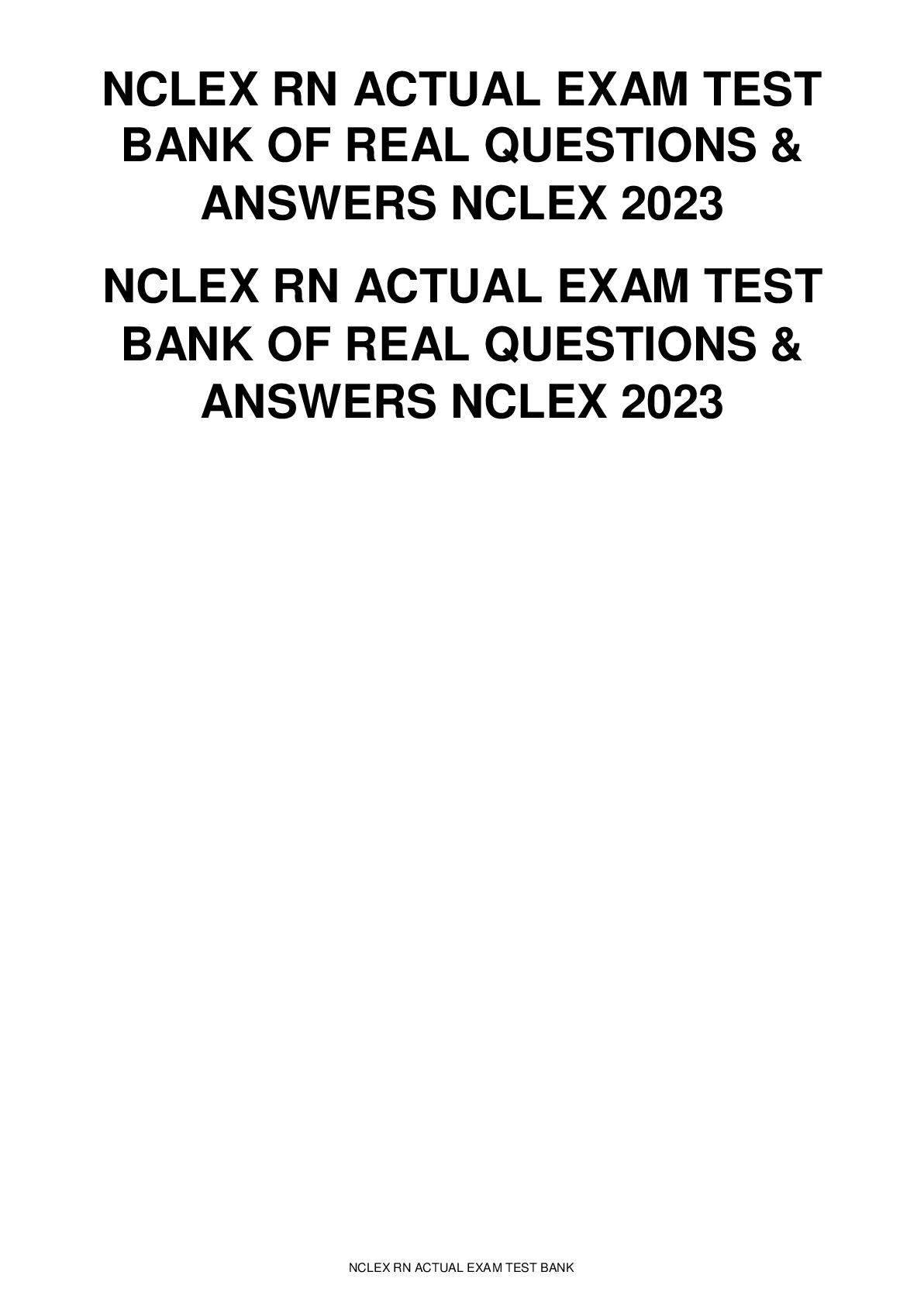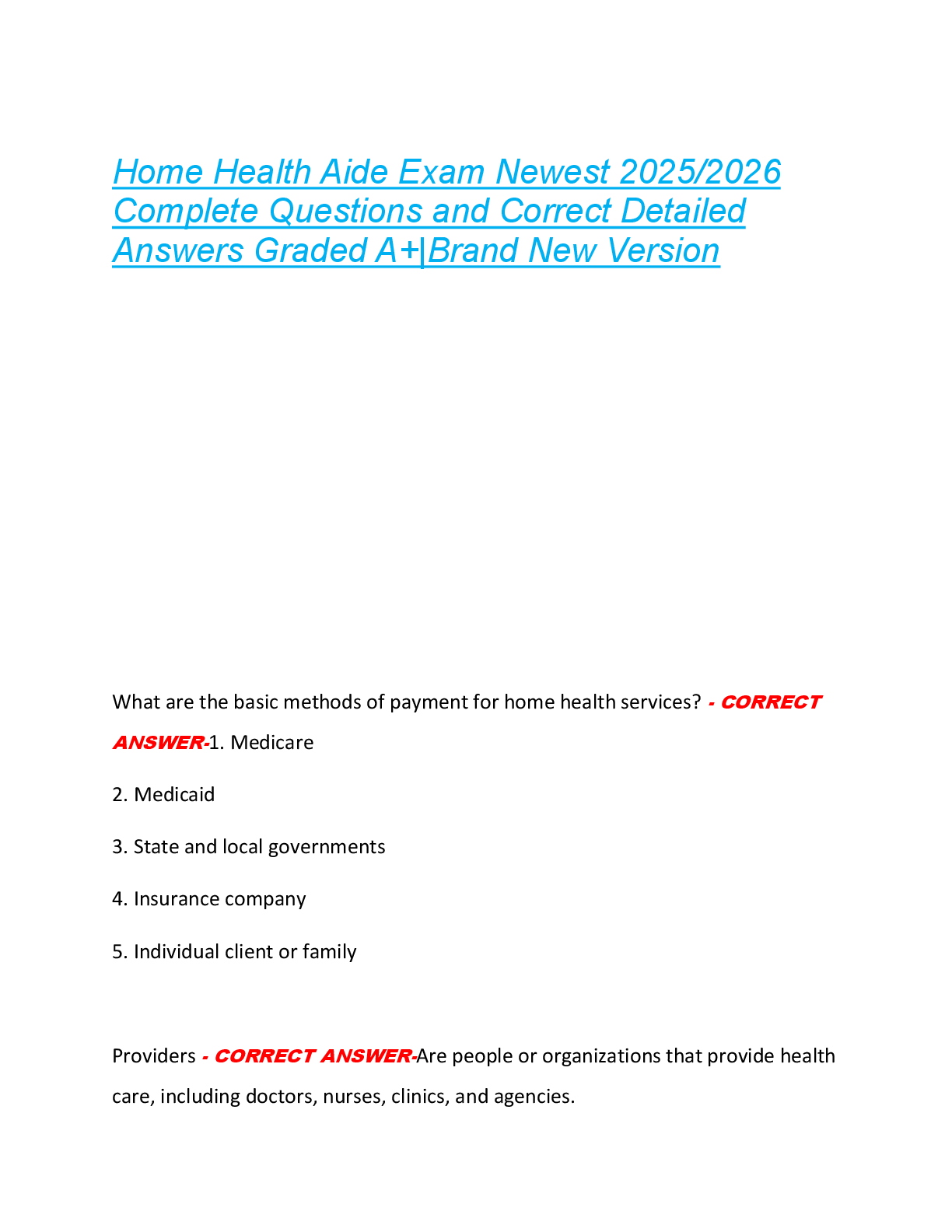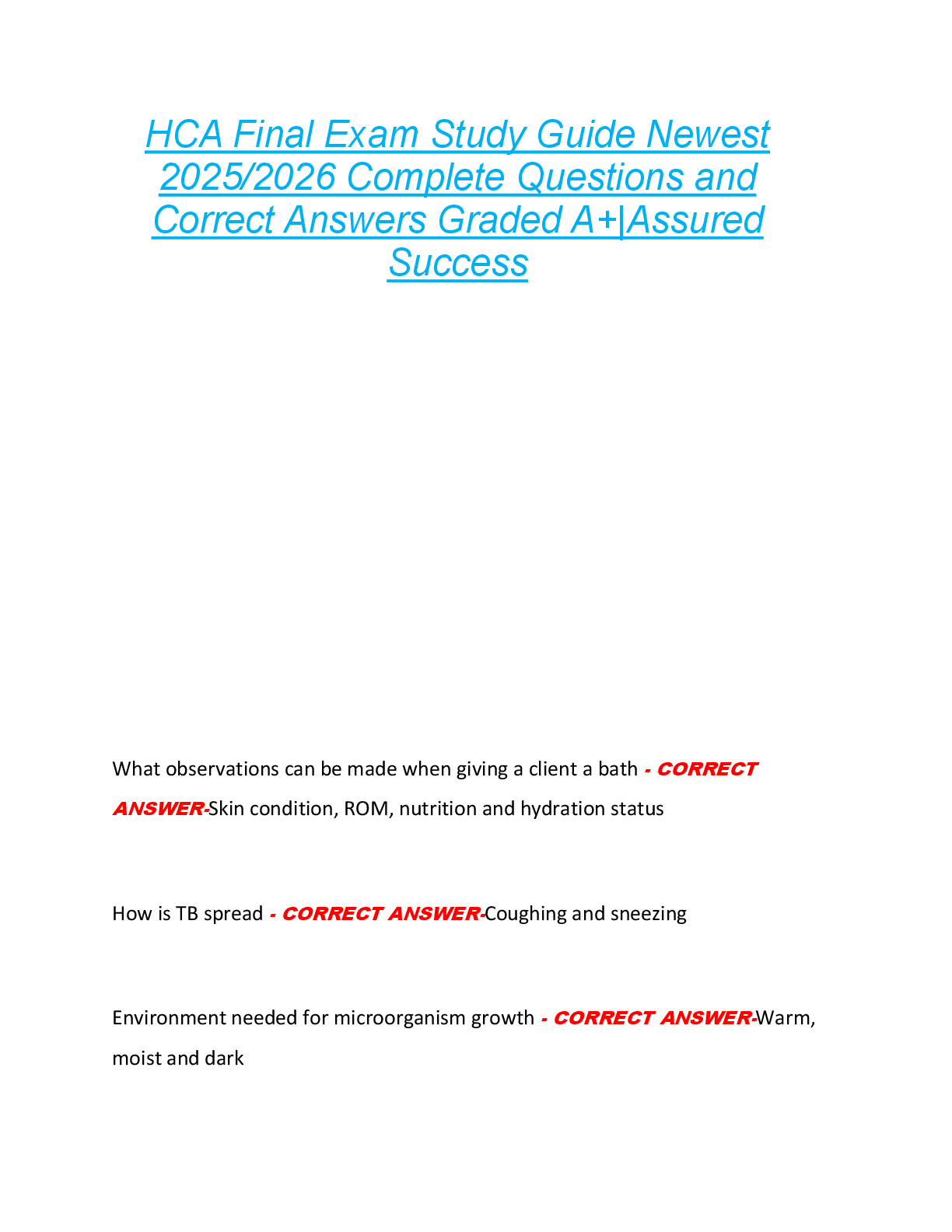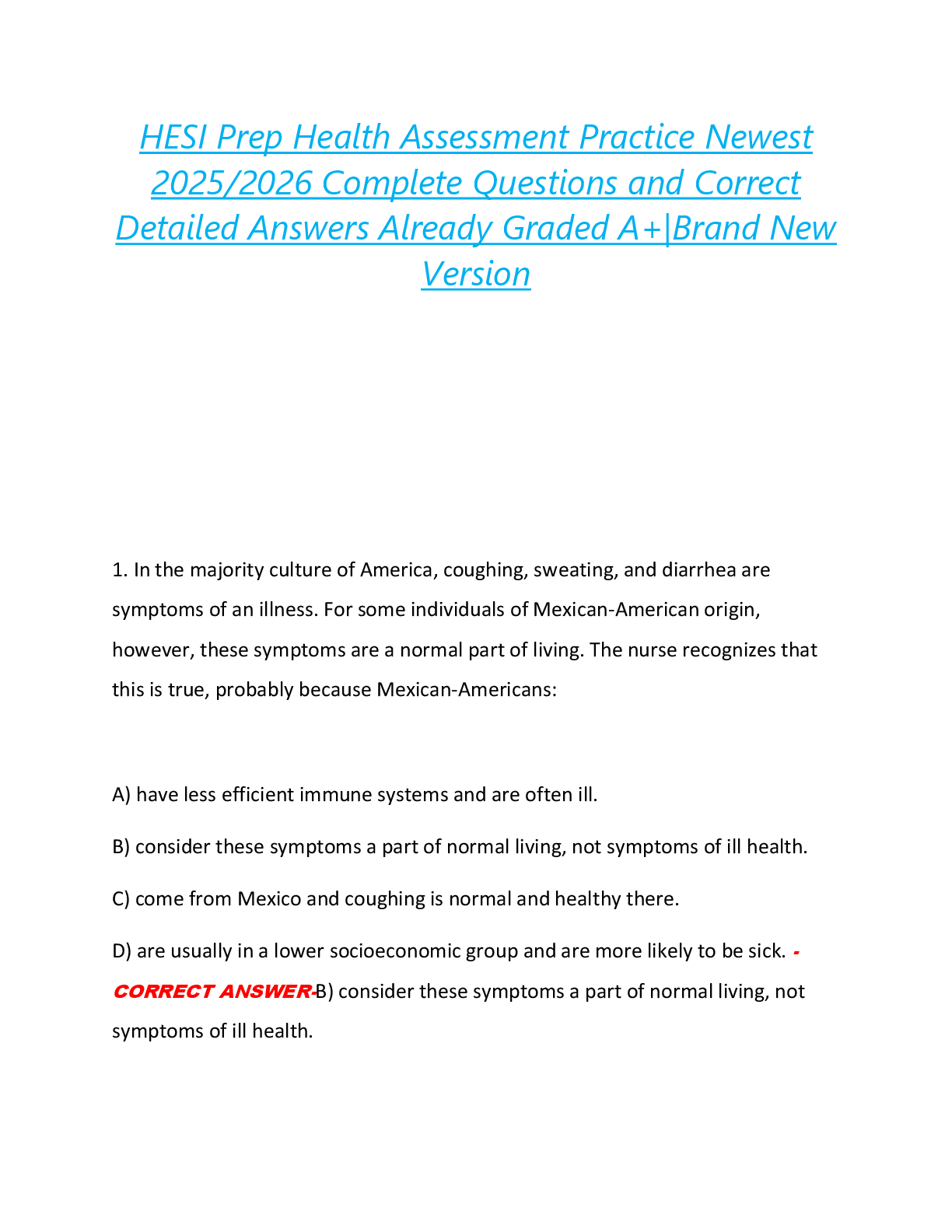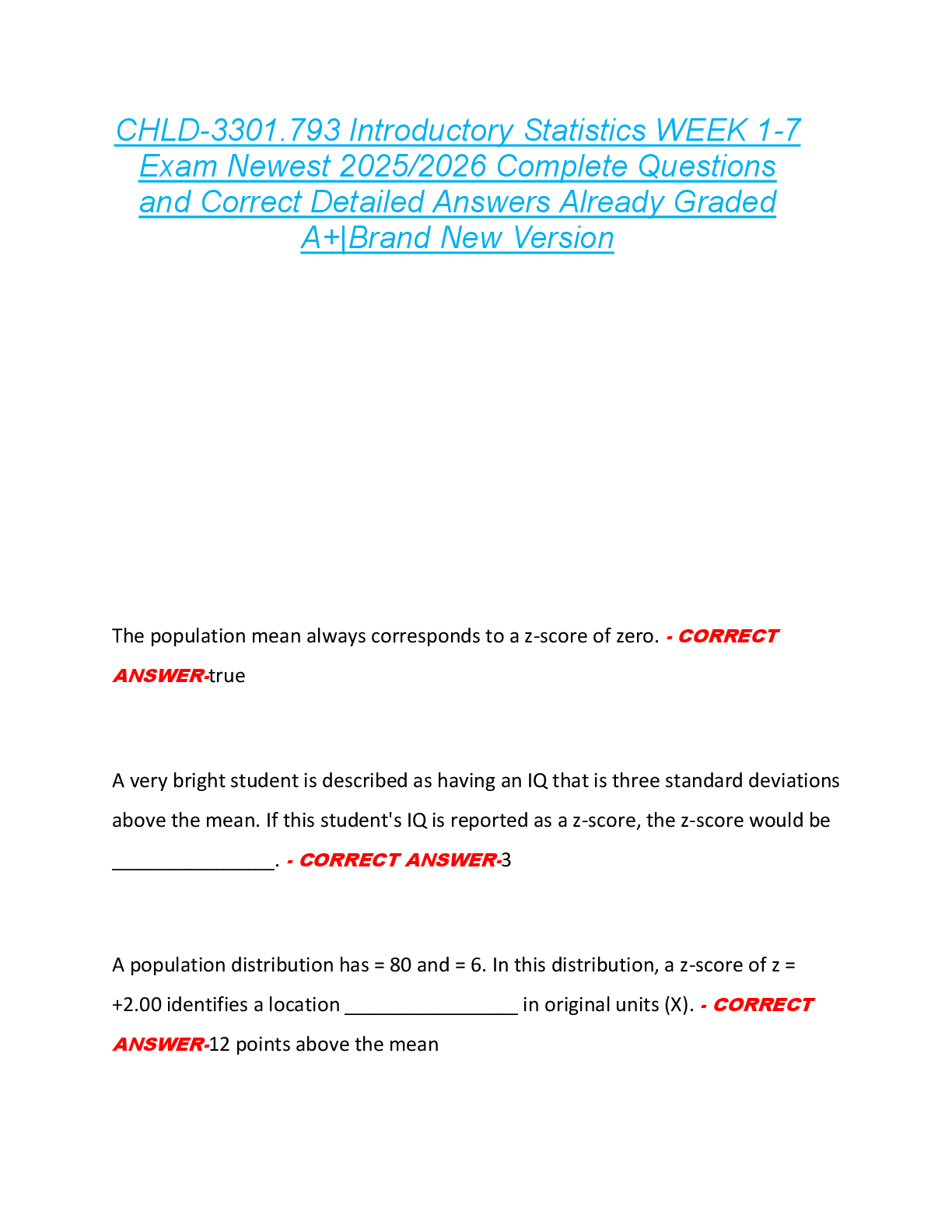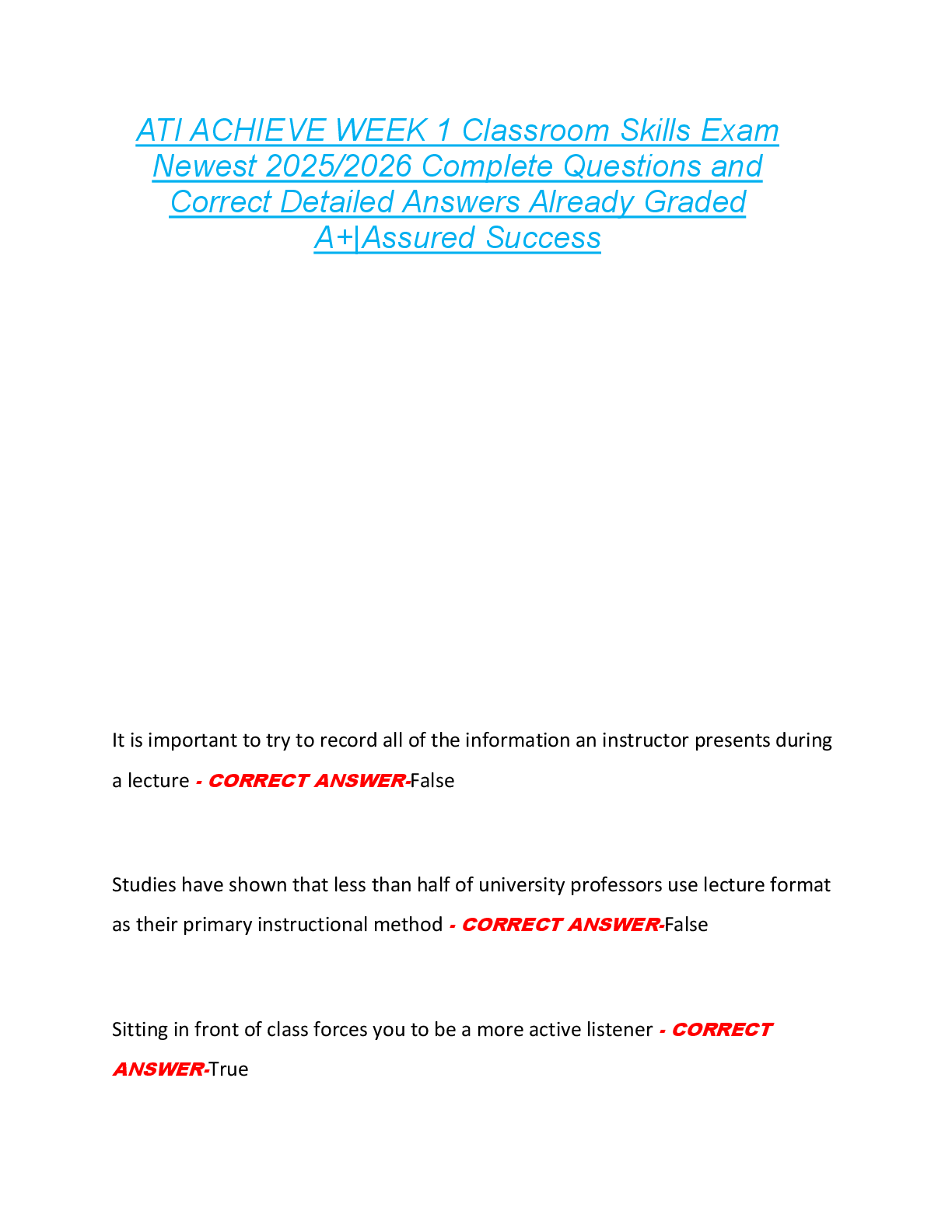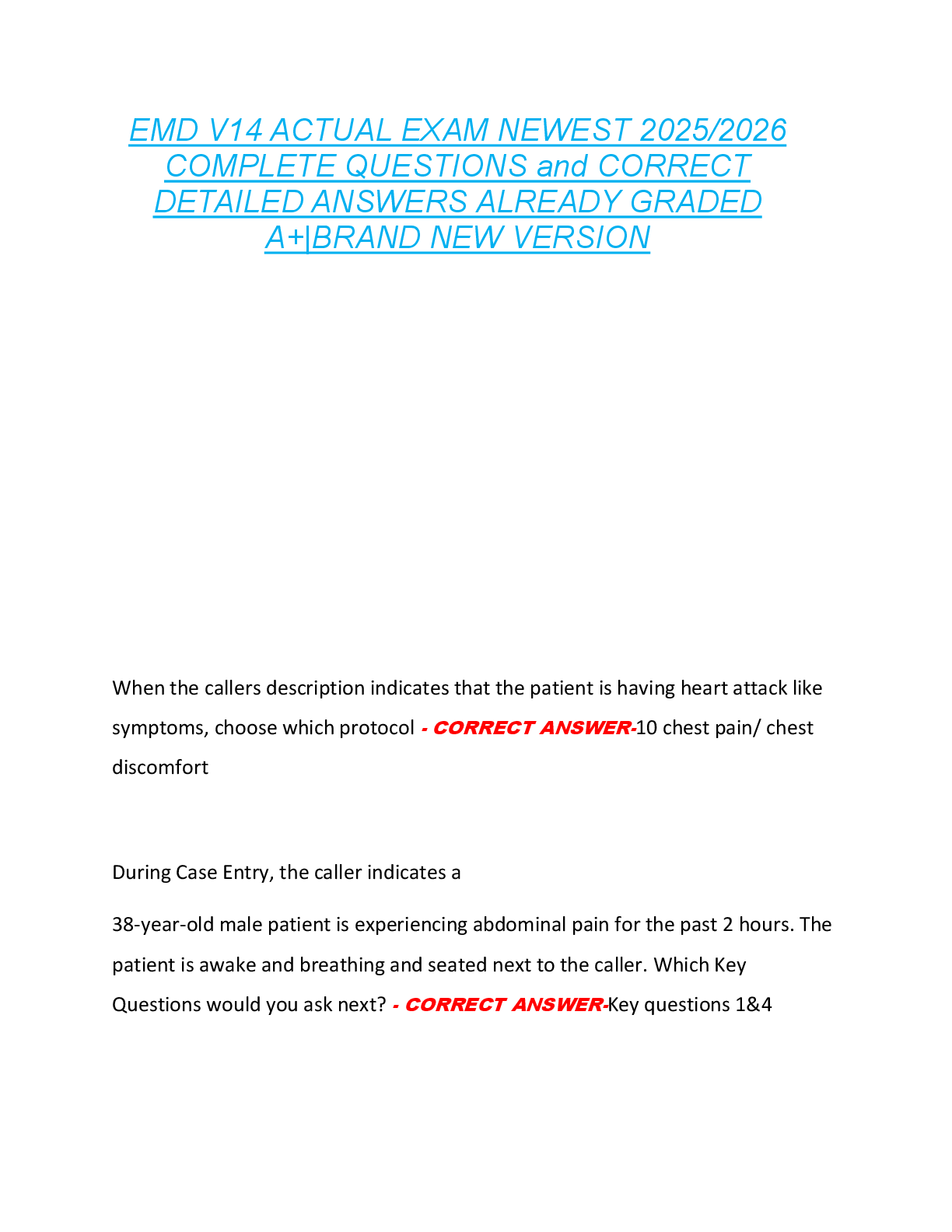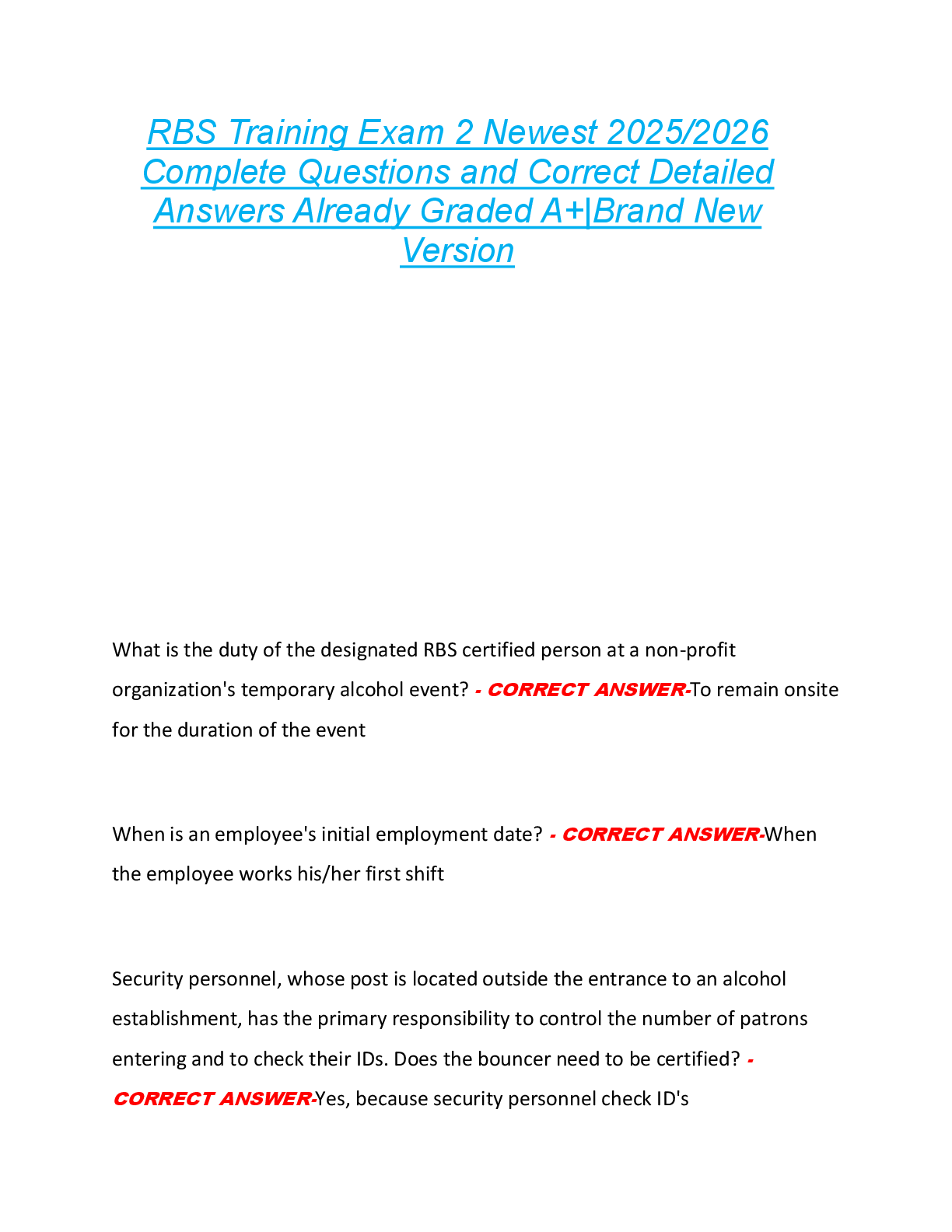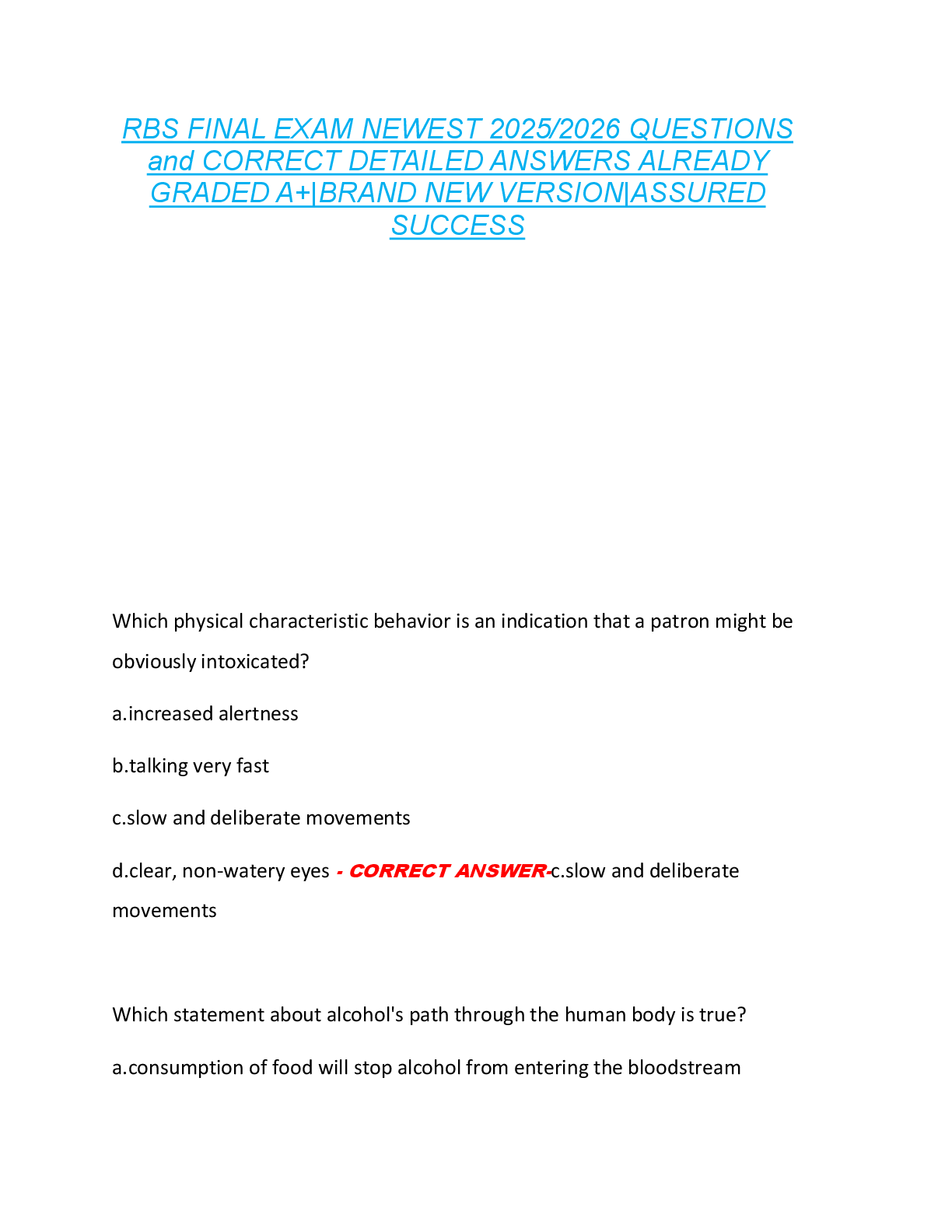HESI > EXAM > ALL HESI FUNDAMENTALS TEST BANK EXAM-Updated Test Ban Containing Questions and Answers with Rational (All)
ALL HESI FUNDAMENTALS TEST BANK EXAM-Updated Test Ban Containing Questions and Answers with Rationales, 2023-2024
Document Content and Description Below
Multiple Choices Question 1 An elderly client wi a fractured left hip is on strict bedrest. Which nursing measure is essential to the client's nursi g care A. Massage any r dd ned reas for a ... t least e minutes. B. Encourage act ve r nge of motion xercises on ext mities. C. Position the client laterally, prone, and dorsally in seq ce. D. Gently lift the client when movi g into a desired position - To void shearing forces when repositioning, the clien sho be lifte gently across a surf ce Redd ed areas should not be massaged (A) since th s m increase the damage to al eady trau atized skin. To control pain and muscle spasms, acti e r nge of mo on (B) m y be li e he affected leg. The position described in (C) is contrain icated for ent with a fractured left hip. Correct Answer: D The nurse is administering medications through a nasogastric tube (NGT) which is connected to suction. After ensuring correct tube placement, what action should the nurse take next? A. Clamp the tube for 20 minutes. B. Flush the tube with water. C. Administer the medications as prescribed. D. Crush the tablets and dissolve in sterile water. - The NGT should be flushed before, after and in between each medication administered (B). Once all medications are administered, the NGT should be clamped for 20 minutes (A). (C and D) may be implemented only after the tubing has been flushed. Correct Answer: B A client who is in hospice care complains of increasing amounts of pain. The healthcare provider prescribes an analgesic every four hours as needed. Which action should the nurse implement? A. Give an around-the-clock schedule for administration of analgesics. B. Administer analgesic medication as needed when the pain is severe. C. Provide medication to keep the client sedated and unaware of stimuli. D. Offer a medication-free period so that the client can do daily activities. - The most effective management of pain is achieved using an around-the-clock schedule that provides analgesic medications on a regular basis (A) and in a timely manner. Analgesics are less effective if pain persists until it is severe, so an analgesic medication should be administered before the client's pain peaks (B). Providing comfort is a priority for the client who is dying, but sedation that impairs the client's ability to interact and experience the time before life ends should be minimized (C). Offering a medication-free period allows the serum drug level to fall, which is not an effective method to manage chronic pain (D). [Show More]
Last updated: 2 years ago
Preview 1 out of 187 pages
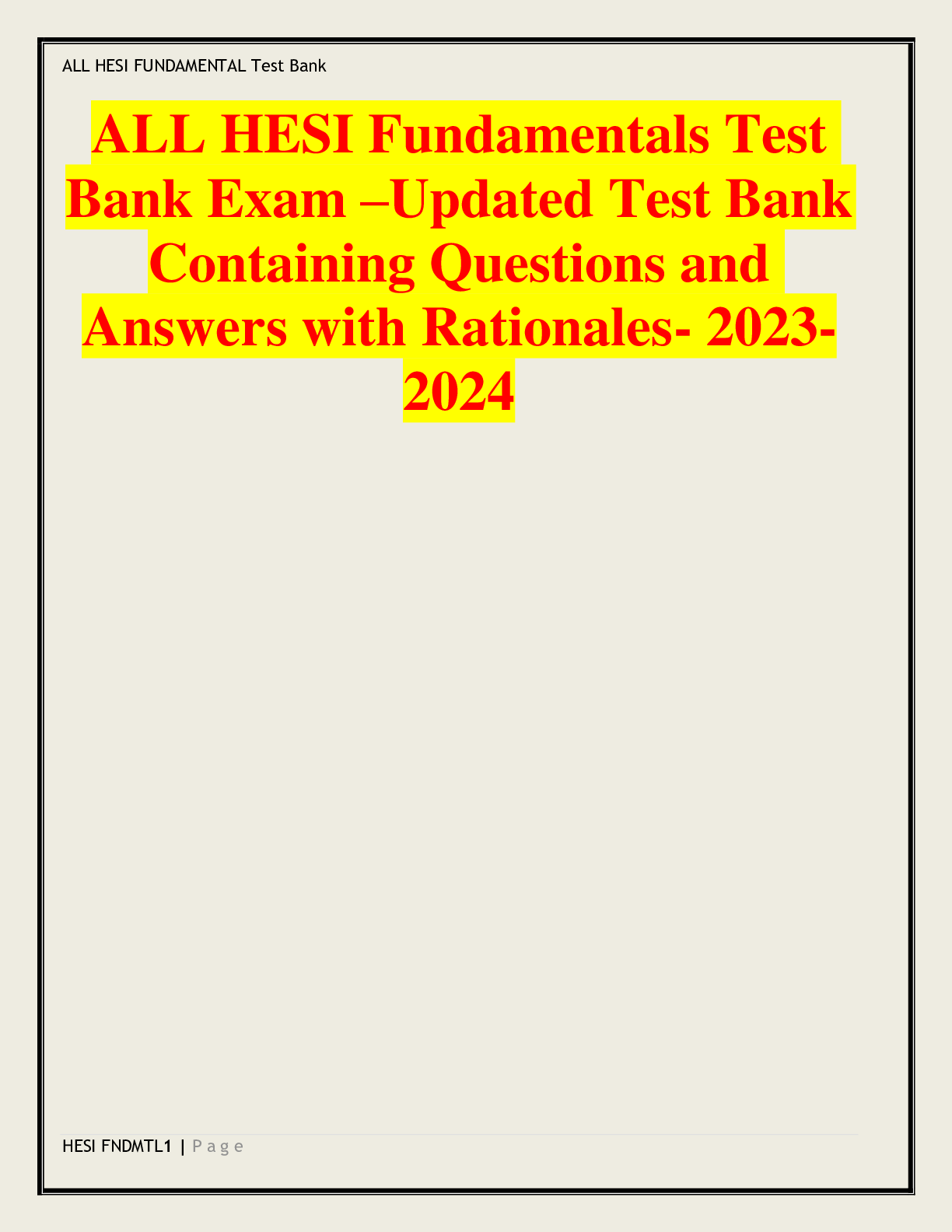
Buy this document to get the full access instantly
Instant Download Access after purchase
Buy NowInstant download
We Accept:

Also available in bundle (1)
Click Below to Access Bundle(s)

HESI EXIT FUNDAMENTAL version 1 EXAM TESTBANK, 55 QUESTIONS AND ANSWERS, COMBINED REVISION MATERIAL ALREADY A+ Graded/HESI EXIT ALTERNATIVE VERSION 3, QUESTIONS AND ANSWERS, REAL EXAM CONTAINING 60 QUESIONS AND ANSWERS ALREADY GRADED A+
The practical nurse (PN) is monitoring a child who is manifesting signs of shock after a motor vehicle collision. Which finding is most important for the PN to report to the charge nurse? a) narrow...
By TopRankProf 2 years ago
$40.5
8
Reviews( 0 )
$10.00
Can't find what you want? Try our AI powered Search
Document information
Connected school, study & course
About the document
Uploaded On
Jun 23, 2023
Number of pages
187
Written in
All
Additional information
This document has been written for:
Uploaded
Jun 23, 2023
Downloads
0
Views
101


